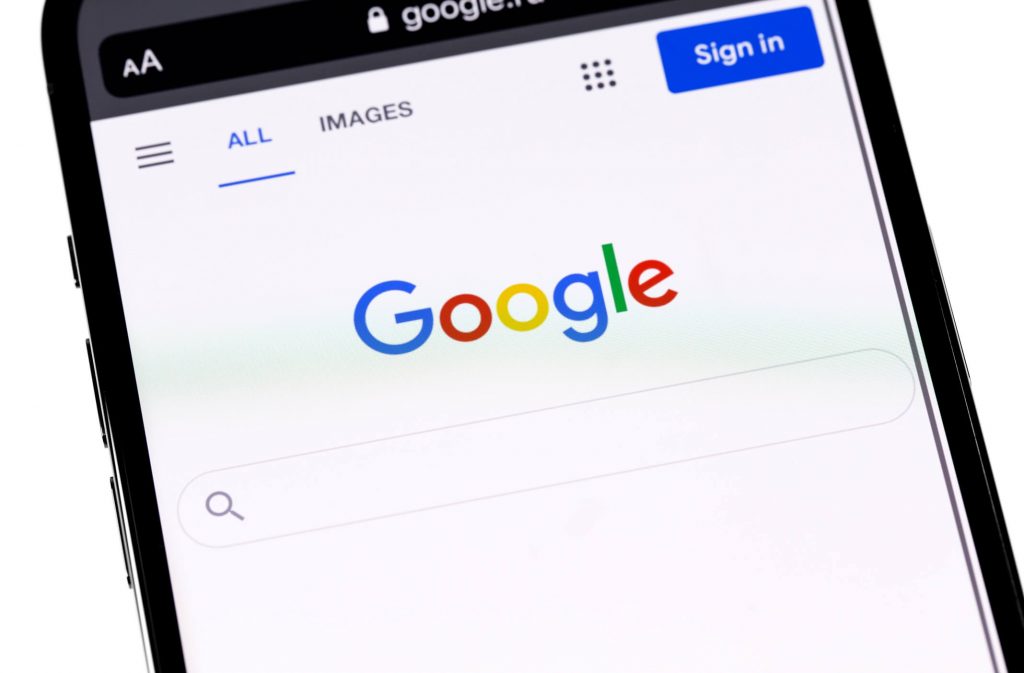Emir is an invaluable member of our team, serving as one of our esteemed Account Managers. With a profound passion for on-page SEO, he possesses an exceptional talent for discovering innovative ways to optimise websites and enhance their rankings. Joining our organisation, Loop, in 2022, Emir brought with him a wealth of expertise gained from his Bachelor’s degree in Marketing Management and Advertising. Currently, he is eagerly pursuing his Master’s degree in International Marketing Strategy, further enhancing his comprehensive understanding of the global marketing landscape. Emir thrives on challenges and continuously seeks fresh opportunities to elevate our clients’ businesses to new heights. Aside from his professional endeavours, Emir has an unwavering passion for culinary arts and loves to cook up a storm. This ardour for cooking exemplifies his drive, creativity, and meticulous attention to detail, qualities that seamlessly translate into his work as a Digital Marketing Executive. His commitment to delivering exceptional results and his genuine enthusiasm for each project make him a trusted and highly sought-after professional. Emir’s profound expertise in on-page SEO, combined with his ambitious pursuit of knowledge and dedication to his clients, make him an invaluable asset to our team. His passion, both in and out of the office, reflects his commitment to excellence, leaving an indelible mark on our clients’ businesses.
Posted on 18/04/2023 by Emir Haskic
Our Complete Guide to Mobile SEO
As the way in which people access the internet becomes less restricted by the shackles of a desktop computer, mobile-first SEO continues to grow in importance. Ensuring your website is fully optimised for mobile devices is an excellent way of maximising your traffic and creating a better user experience. Not only can it lead to higher rankings in the SERPs, but it also means that your mobile customers can easily navigate your site to find what they’re looking for.
By understanding mobile SEO and how it should be implemented you can begin to unlock the true potential of your mobile customers. Realising its importance and being able to detail exactly how it differs from desktop SEO is now an absolute must for most businesses. By not considering it, you risk missing out on the largest percentage of users on the web.
What is Mobile SEO?
Just like regular SEO is the process of optimising a website for search engines, mobile SEO involves optimising for queries from mobile devices. It works in exactly the same way and has the same goal of making your website more appealing to search engines.
The key feature of mobile SEO is that the URL is the same as a desktop device. Therefore, you must have a fully optimised website for desktop, whilst making it mobile friendly. Mobile SEO normally focuses on on-page techniques, such as making sure images are rendered to fit a mobile screen, improving on-site speed and ensuring mobile navigation is fully functional.

Why is Mobile SEO important?
Let’s start this with some basic facts and figures. There are estimated to be 6.6 billion mobile users worldwide. Of those users, roughly 4.67 billion are active mobile internet users. That amounts to a whopping 59.72% of all global internet traffic. These figures are only growing as mobile devices go down in price and become more available worldwide. Data shows us that emerging digital markets such as China, Brazil and Argentina are using mobiles as the primary way of accessing the internet.
From this, we can begin to see why mobile SEO is so important. Vast numbers of users are accessing the internet worldwide via mobile, so it’s essential that our websites are fully optimised for them. Not investing in mobile SEO could risk missing out on potential business as customers are turned away by bad web design and slow loading speeds.
Google’s Mobile-First Indexing
There was a time when it didn’t matter to Google whether your website worked on mobile, but those days are long gone. Over the last five years or so Google has been working on mobile-first indexing – a response to the rapidly changing ways in which people access the web.

Mobile-first indexing essentially means that Google will use the mobile version of a website when indexing. In the past, Google would use the desktop version of a website to determine its relevance in the SERPs. This increases the need to make your site as mobile-friendly as possible, as Google is now looking at how it looks on mobile rather than desktop.
It’s important to note that mobile-first indexing doesn’t completely disregard the desktop version. The desktop version can still be used if there isn’t a mobile-friendly version of your website. However, by not having a mobile-friendly site you can harm your chances of ranking higher in the SERPs.
Desktop SEO vs Mobile SEO
Although similar, there are some key differences between desktop and mobile SEO. They can be split into three categories:
Layout and Smaller Screen
Smaller mobile screens mean that you’ll have to consider how your website will look when there’s less room to work with. Desktop layouts may use multiple-column designs that are unsuitable for mobile devices. Web modules and information will have to be pushed below to make one long, swipeable webpage. The danger here is that important information will be much further down the page and potentially missed.
You want to design a site that functions on both mobile and desktop. To confuse things even further there are many different screen resolutions to choose from. What looks good on one device may not necessarily work on something else.
Different Operating Systems
The difference in operating systems on mobile devices means that there is a bigger variation in specific, operating system-focused keywords. Google will take into account the operating system on a mobile and will display results that are most relevant to that. Search queries with app-oriented intent will bring up apps that can be used with the device you are using.
Because of this, you won’t be able to see certain app packs when browsing on a desktop. Google understands that the vast majority of apps are built for mobile, so why would it show them in the SERPs?
Location
Perhaps the biggest difference of all; is location. Many search queries online are location-oriented – think things like ‘plumbers in London’ or ‘best bakery in Northampton’. This is even more popular on mobile as people are often out and about when making the query. Google understands this and will provide the most relevant results in the SERPs.
Most mobile devices use GPS to track their location. Search engines simply use this information and display results depending on the location you’re in. If you search ‘best bakeries’, you will get a completely different set of results depending on where you are in the world. This is different from desktop, where location isn’t seen as being as important and is generally not used by search engines.
How to Optimise Your Website For Mobile
Build a Mobile-Responsive Website
Responsive design is all about making sure your website is functional on mobile. It involves looking at your website and making sure it works on desktop as well as it does on mobile.
Improve Site Speed
A slow website is a surefire way to turn someone away before they’ve even had a chance to look at what you offer. Even the smallest increase in page load time can send your bounce rate sky-high. Customers who think your site is slow are also far less likely to return.
Not only this but Google has begun using site speed as a ranking factor in their algorithm. Slower sites will now be penalised and will rank lower on the SERPs – so look at making your site as snappy as possible. Optimise images, minify code, keep on top of your redirects and look at browser caching – it all helps.
Ditch the Pop-Ups
Pop-ups can not only be irritating on mobile devices, but they can actually get your site penalised by Google. Large pop-ups are generally a no-go but smaller ones are still deemed as acceptable. Sometimes pop-ups are needed, but make sure to be fully aware of Google’s guidelines so you don’t harm your site’s chances.
Make your Site Fully Legible
This sounds obvious but the importance of creating a fully legible site cannot be understated. Customers that visit a site that has bad, difficult-to-read typography are unlikely to return. Your font should be clean and clear, in a colour that stands out from the background. This will make your website more accessible to users with visual impairments – something Google deems as important in its ranking factor.
Account for a Smaller Screen Size
One of the key differences between desktop and mobile is the size of the screen. Mobile devices generally have much smaller areas to work with, so the design of your website has to suit this.

Buttons that are too small to click can be one the most frustrating parts of accessing a site on mobile. Navigation menus, buy buttons and every other clickable part of your website should be big enough that is comfortable for a customer to click. Likewise, they shouldn’t be too big that they take up too much space or end up being clicked by accident.
Think About Your Navigation & Calls-to-action
Whilst you don’t want to be too sell-sell-sell on mobile, there’s nothing worse than a user who actually wants to buy, but can’t because the website design makes life hard for them. Having contact details and calls to action regularly dotted around your site to allow users who want to get in touch to do so is key on mobile, and something many businesses forget about. It’s worth noting that you’ll need to play around with CTA sizes and locations, remember you’ll be working with a much smaller device, there isn’t a greater frustration for users than not being able to access or tap buttons.
Having fabulous content that inspires and powerfully persuades users to buy from you is wasted if they have to scroll 15 times to get to the top or bottom of your page. They’ll lose interest, and you’ll lose money. Don’t let it happen! We recommend having your details or a CTA around every 2 scrolls.
Tracking and Analysis
As with desktops, it’s standard practice to be checking in with your website’s analytics on a recurring basis. It’ll help you gain a good understanding of how your customers are using your website, looking specifically at mobile, review top-performing pages, bounce rates, and session duration.
Also, take a look at exit pages and bounce rates, it’s likely that there could be a problem that’s causing a poor experience in the lower-performing pages, test out the pages yourself and see what you think. Use your analytics data to work on further updates and changes too, prioritise your top landing pages and see if you can squeeze a relevant CTA in there or a link to related content, trial different things and see how you get on.
Get to Grips with the Latest Digital Tools
Mobile friendly is often seen as a complicated business, but luckily there are some handy digital tools to help you nowadays.
Your first port of call for verifying the mobile-friendliness of your website is Chrome Dev Tools. This can be accessed by right-clicking on a webpage using Chrome, clicking inspect, and then navigating to the Lighthouse tab. Next, simply analyse your page for mobile and you’ll be able to see all the facts and figures in one place, including page load speeds, accessibility issues and more.
It should be mentioned that you can only do this for individual pages. That means for deep mobile-friendly analysis you’ll have to run this on every page on your website.
There are plenty of other SEO mobile-friendly tests available online such as Google PageSpeed Insights so make sure to familiarise yourself with them all. Alternatively, opt for the old-fashioned method and open up your website on your own mobile.
Mobile Friendly SEO with Loop Digital
Loop Digital offers totally bespoke SEO packages that can help your website reach its full potential. Our team of experts can help optimise your website for mobile to ensure that you are maximising your traffic and growing your online presence. Whatever your SEO needs, we’ll listen and form a comprehensive mobile SEO plan using our skills and experience. If you are interested in finding out more about mobile-first SEO, speak to a member of our team today.
Looking for your next opportunity?
Digital marketing careers
We’re always on the lookout for talented individuals to join our ever growing team. If you think you’d be a great match for Loop Digital, we’d love to hear from you.

Stay in the loop... subscribe to our newsletter for all the latest industry news
"*" indicates required fields






